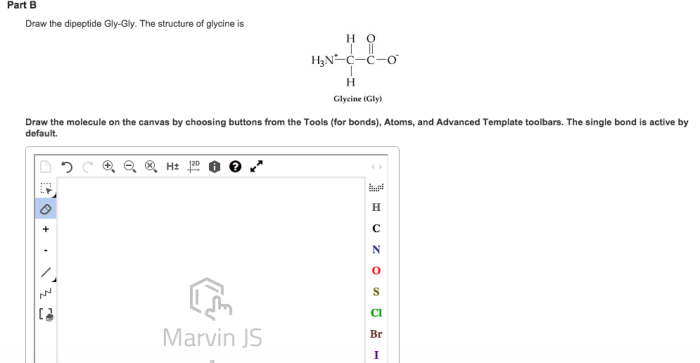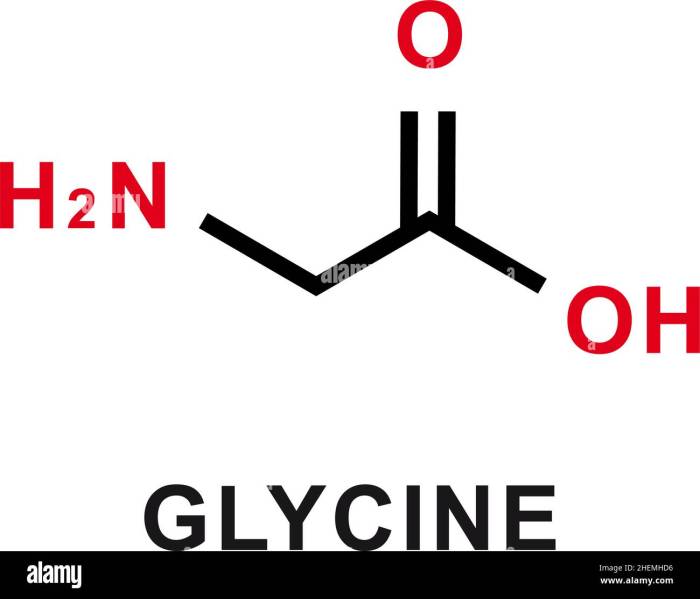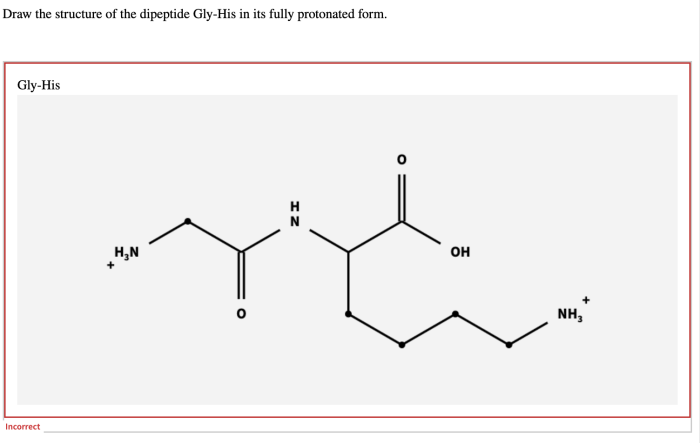Draw the dipeptide gly gly the structure of glycine is – Delving into the fascinating realm of dipeptides, we embark on an exploration of the dipeptide Gly-Gly, unraveling its structure and delving into the significance of glycine in its composition. This journey promises to illuminate the fundamental principles governing the formation and properties of dipeptides, shedding light on their essential roles in biological systems.
The chemical structure of glycine, the building block of Gly-Gly, forms the cornerstone of our understanding. We delve into its unique properties, examining the interplay between its amino group and carboxyl group, which dictate its behavior in various chemical environments.
1. Introduction

A dipeptide is a molecule composed of two amino acids linked by a peptide bond. It is the smallest form of a protein and serves as the building block for larger protein structures. Glycine, the simplest amino acid, plays a significant role in dipeptides due to its unique properties.
2. Structure of Glycine

Glycine has the chemical formula NH2CH2COOH. It consists of an amino group (NH2), a carboxyl group (COOH), and a central carbon atom. The amino group is basic, while the carboxyl group is acidic. This allows glycine to form zwitterions, which are molecules with both positive and negative charges.
3. Dipeptide Gly-Gly

When two glycine molecules react, they form a dipeptide called Gly-Gly. The peptide bond is formed between the carboxyl group of one glycine molecule and the amino group of the other glycine molecule. The resulting structure can be represented as H2N-CH2-CO-NH-CH2-COOH.
4. Properties of Gly-Gly: Draw The Dipeptide Gly Gly The Structure Of Glycine Is
Gly-Gly is a white, crystalline solid with a melting point of 233-235 °C. It is soluble in water and has a slightly sweet taste. Gly-Gly is a neutral molecule with a pH of 7.0.
5. Applications of Gly-Gly

Gly-Gly is used in a variety of biological systems. It is a precursor for the synthesis of proteins and other peptides. Gly-Gly is also involved in the regulation of cell growth and differentiation.
Query Resolution
What is the chemical formula of Gly-Gly?
C4H8N2O2
What is the significance of glycine in dipeptides?
Glycine’s small size and lack of side chain contribute to the flexibility and conformational diversity of dipeptides.
How does the structure of Gly-Gly influence its solubility?
The presence of both hydrophilic and hydrophobic groups in Gly-Gly enhances its solubility in both aqueous and organic solvents.